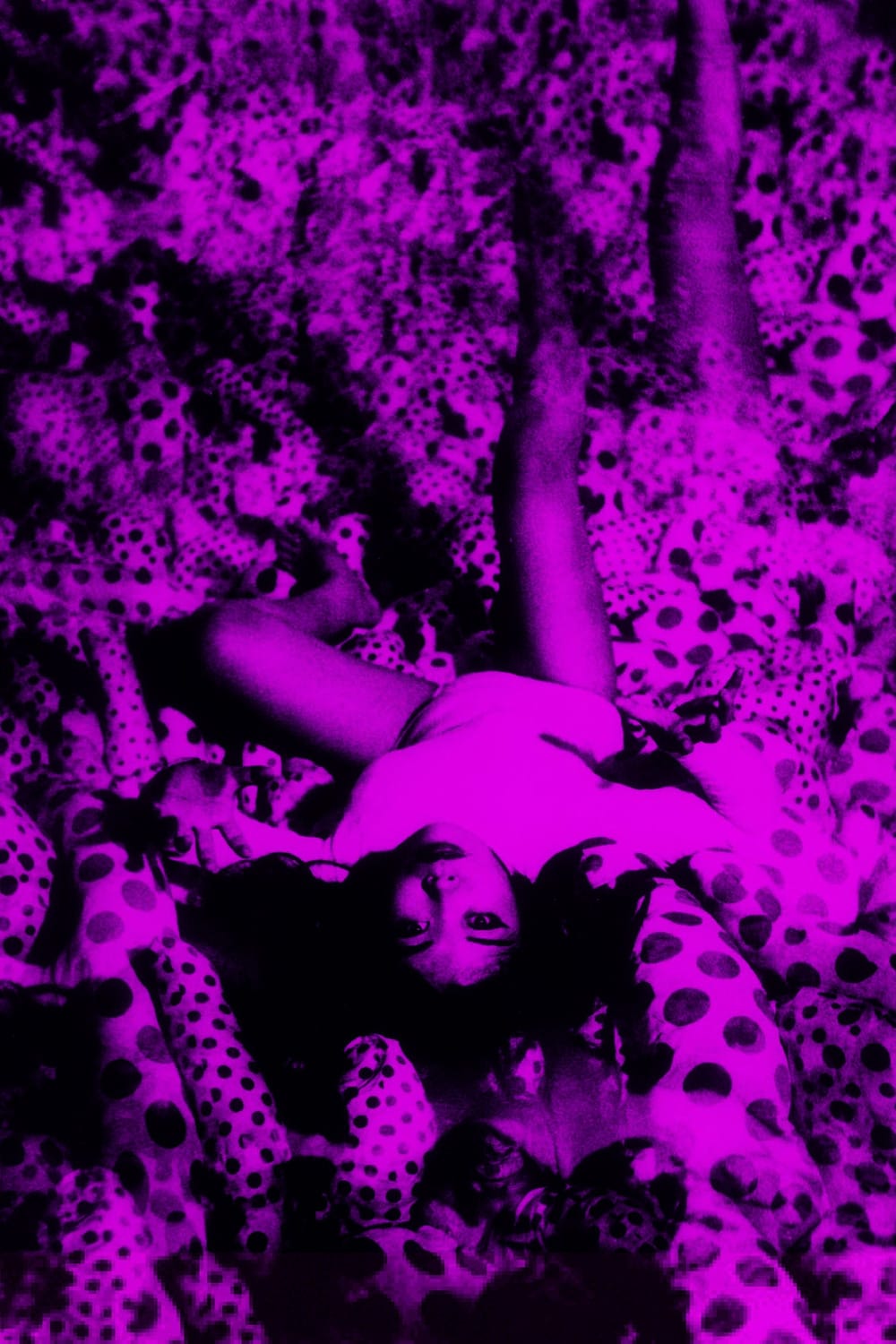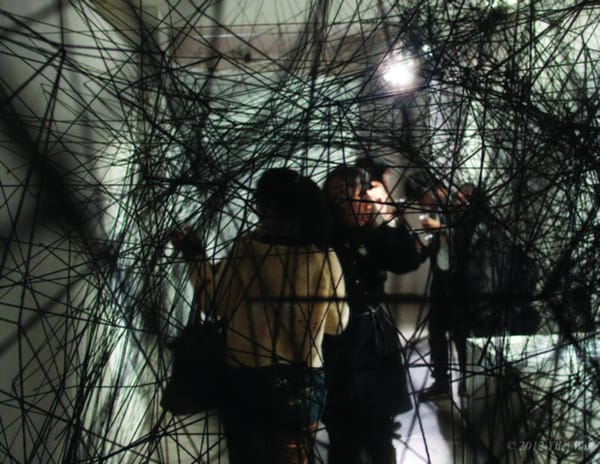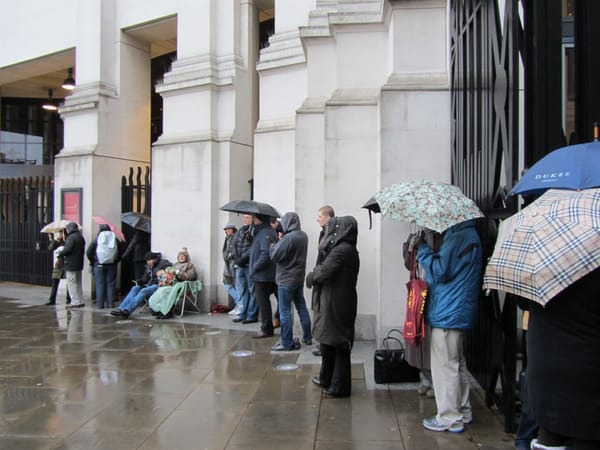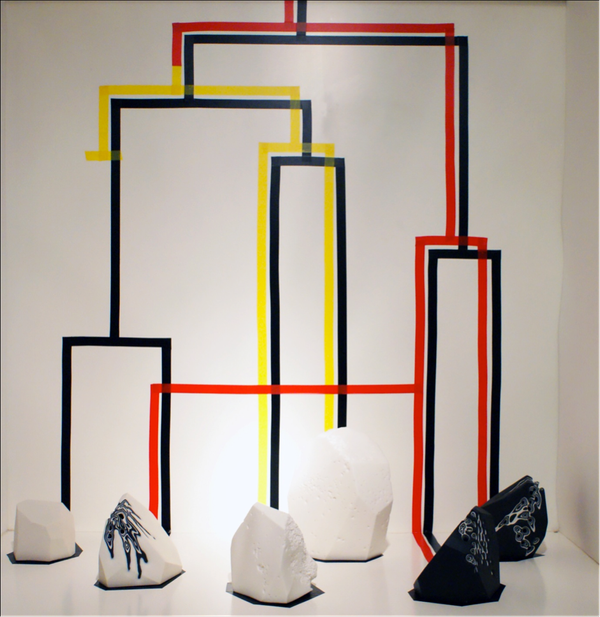Going dotty for Kusama
Tate Modern has us turning Japanese and just a little mad

The disturbed mind of Yayoi Kusama is a fascinating place. An artist with links to Georgia O’Keefe, Andy Warhol and Joseph Cornell, her art is inspired by her own hallucinations and her outlook on the world. Even before arriving at the exhibition entrance, you have already been greeted by huge red blow-up balls with white polka dots, hanging from the ceiling – a small taste of things to come. This retrospective chronologically follows Yayoi Kusama’s journey to becoming Japan’s best-known modern artist, the events in her life directly corresponding to the development of her art. The collection begins with her early days when, living in 1950’s Japan, women were not meant to paint. The first two rooms lure you gently into Kusama’s world, but while the paintings are relatively ‘normal’, they still feel unnerving and there is already a presence of her signature polka dots, abstractly layered over the top of nature inspired pieces.
“It’s shocking yet you sit there paralysed...unable to keep your eyes off it”
The move to New York prompted a freer style of art. When entering the third room – a large white room in which hang seven white canvases, each one with slightly varying textures and densities of a repetitive pattern – a feeling of calmness overcomes you. That is, until one closely inspects the ‘Infinity Net’ paintings and realises that each dot has painstakingly been done by hand; with the tens of thousands of small dots on each canvas one envisages Kusama, sat in a studio for hours at a time, in a trance-like state, painting in this obsessive and compulsive way. There are small areas of a concentrated texture and then large interrupting scrapes – parts where she’s become frustrated with the monotonous process.
Stepping into room four entails leaving the real world behind you and fully submerging yourself in Yayoi Kusama’s alternative Avant-Garde vision. You are confronted with some of her famous sculptures: everyday objects such as a couch, bookshelves and clothing covered in thousands of fabric penises.
As a forerunner to the development of pop art, Kusama thrived in swinging 1960’s New York, where she moved to performance art, using experimental Flower Children – the hippies of the 60’s – in her work. One advert for volunteers states “Happy people needed for Kusama’s happening”. The participants would get naked in some of New York’s public spaces, including Central Park and Brooklyn Bridge. Then, they would paint each other entirely in polka dots and dance, Kusama herself joining in.
Easily the most disturbing and impacting part of the exhibition is Kusama’s 1967 experimental film ‘Kusama’s Self-Obliteration’ which is shown on a large screen in a dark room. The bulk of the film follows Kusama – herself covered in polka dots – through a forest whilst she blankets everything in sight in polka dots, obsessively, like the main character of a horror movie would; a horse, trees, a lily pad in the middle of a lake and even a very unhappy cat all suffer the same fate. The film then moves to a dark room in which a group of hippies participates in a drug-fuelled, polka-dot body-paint-covered orgy. At one point the camera zooms into a man’s penis as Kusama paints little blue polka dots all over it. It’s shocking yet you sit there paralysed, mouth gaping, unable to keep your eyes off it. By the end, you’re absolutely sympathetic with Kusama’s state of mind to the point where you start feeling like you’re almost going crazy yourself – covering a forest in polka dots? What a bloody good idea!
After moving back to Japan in the early 70s and voluntarily admitting herself into a psychiatric hospital some years later (where she has lived ever since) Kusama returned to sculpture and installations and, to a lesser extent, painting. One of her most famous installations, ‘I’m here, but Nothing’ (2000-2012), was particularly eerie: it consists of a normal front room lit only by UV lights, where everything – couches, lamps, a TV, even the flowers on the dining table – are covered in fluorescent polka dots that look almost like light beams that should disappear as you walk past the source. Playing on the TV, and unsettling the atmosphere, is a video of Kusama singing a creepy Japanese song.
The showstopper of the whole exhibition is the final installation ‘Infinity Mirrored Room- Filled with the Brilliance of Light’, which Kusama has created especially for the Tate Modern. The small dark room with mirror-covered walls and hanging lights that change colours in different patterns is worth the entrance fee alone. Because of the darkness in the room you can’t see your own reflection so it gives the impression of never-ending space with millions and millions of little multicoloured lights. It’s breathtaking and you could literally waste hours away in here with the outside world a mere distant memory. This is how Yayoi Kusama sees the world and you come out feeling very privileged to have experienced it.
“She blankets everything in sight in polka dots...a horse, trees, a lily-pad...”
As the revision and exam period quickly approaches we all need a bit of escapism. When the pressure mounts I urge you to take a couple of hours out of your day to visit Kusama’s world. I promise the stresses of Imperial life will be forgotten instantly. There’s something incredible about her work; art critic Sir Herbert Read described her pieces as “images of strange beauty that press on our organs of perception with terrifying persistence”.
As with all Tate events, the exhibition is perfectly set out as a journey and you come out with a deep understanding of Kusama and her work. However, it is no coincidence that upon leaving the exhibition space you are greeted by the staircase leading straight up to the 7th floor bar – a large glass of wine is needed for recalibrationw into the real world.
Yayoi Kusama at Tate Modern until 5 June. Tickets from £10








